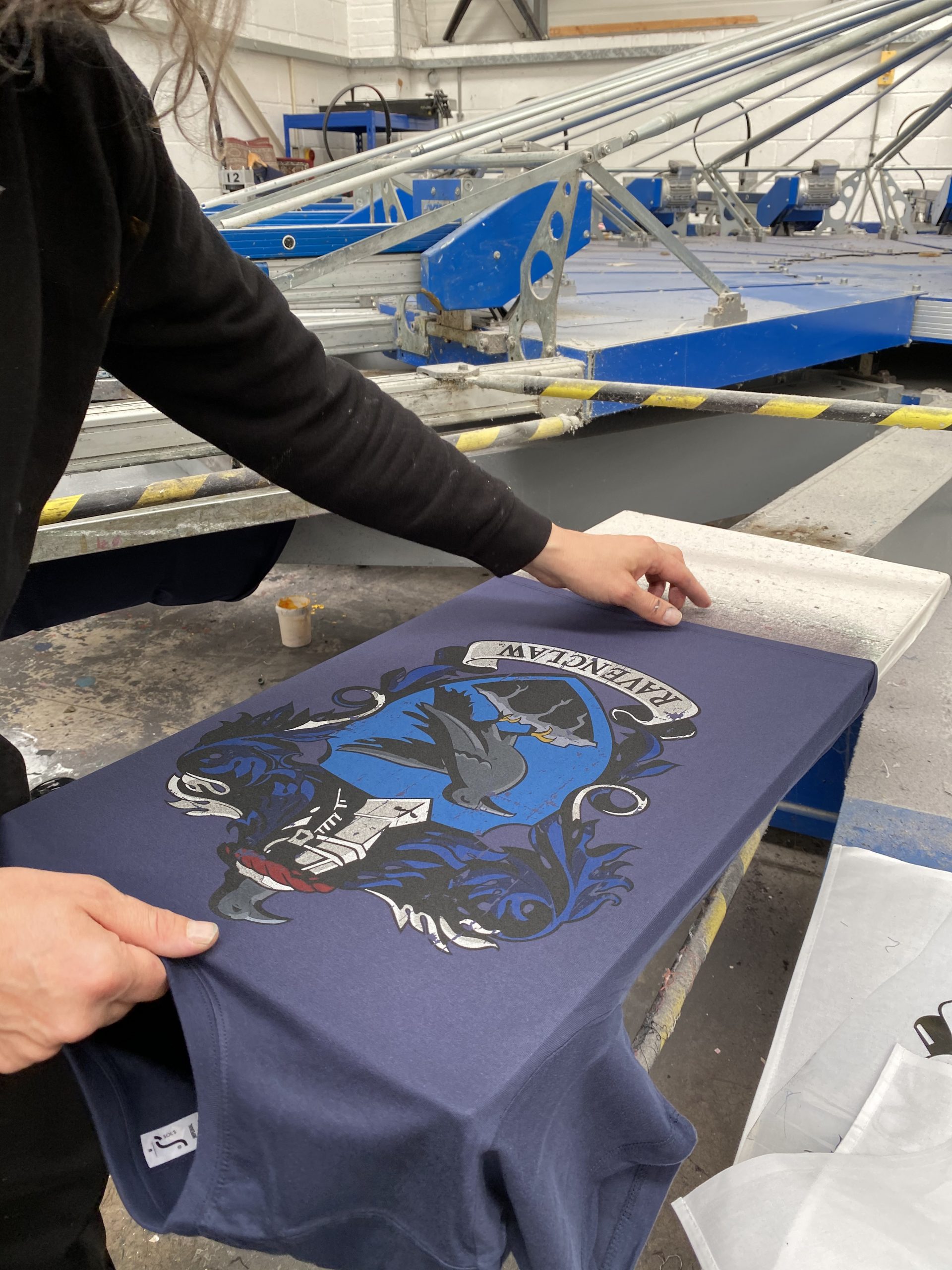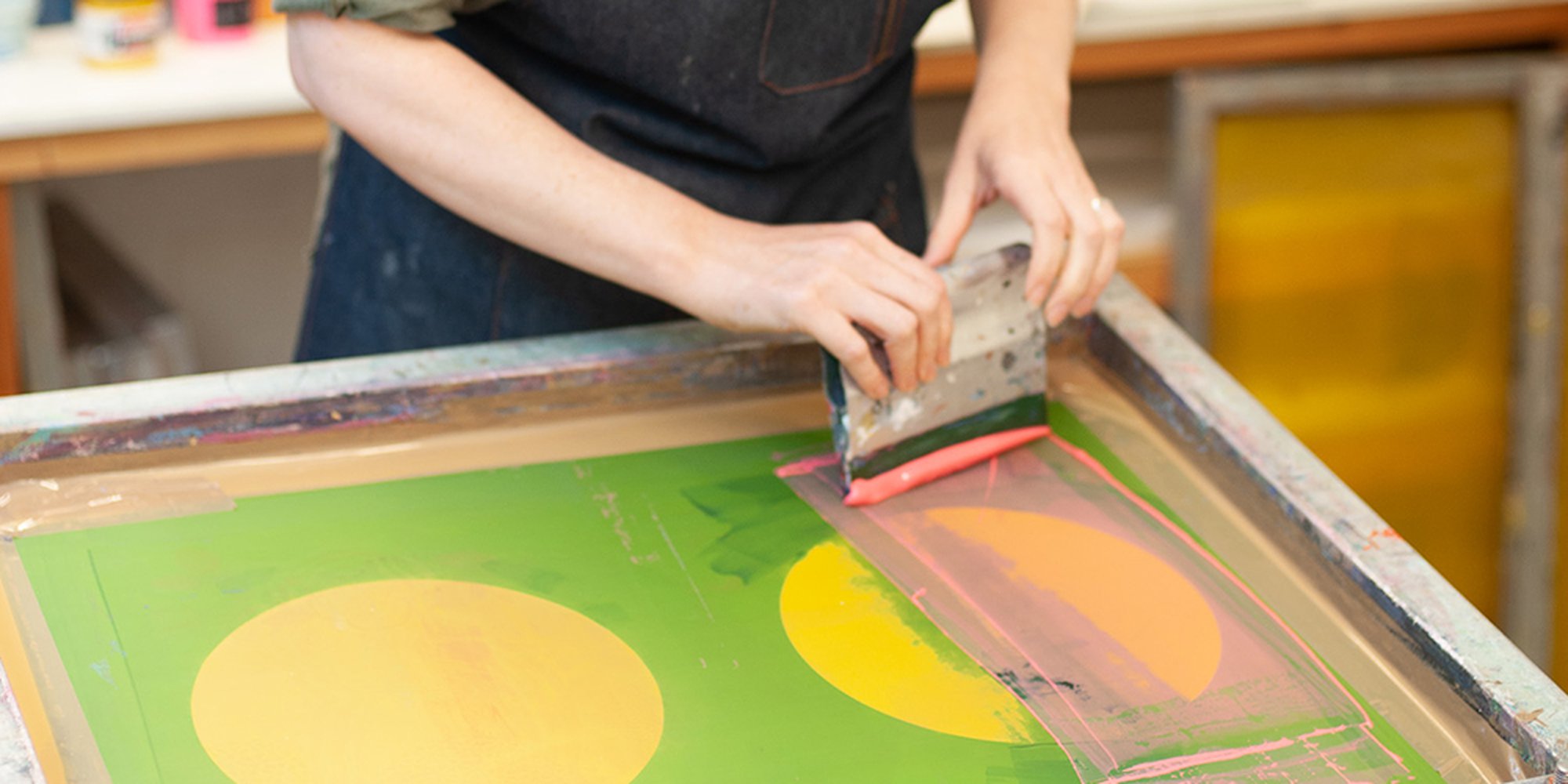ChatGPT said: Inside look at 10:9 Design LLC Company screen printing process
The Essential Guide to Understanding Screen Printing and Its Versatile Uses
Screen printing has a rich history that goes back to old times, evolving into an advanced strategy made use of across numerous industries today. This guide checks out the ins and outs of the screen printing process, outlining its applications in style, home, and advertising style - 10:9 Design contact. Recognizing these fundamentals can open up innovative possibility for both business and artistic projects. The complying with areas will certainly expose crucial suggestions and strategies to improve one's screen printing endeavors
The Background of Screen Printing
Screen printing has roots that map back centuries, its advancement reflects the technical and artistic improvements of different cultures. Coming from old China, the technique was originally made use of for embellishing textiles and later infect Japan, where it ended up being integral to Ukiyo-e woodblock printing. The technique shifted to Europe in the 18th century, where it obtained popularity amongst artisans and industrial printers. The invention of picture solution in the 20th century transformed screen printing, enabling for even more detailed styles and better efficiency. Artists like Andy Warhol additionally pushed its appeal, making use of the medium to create renowned jobs that combined commercialism and art. By the late 20th century, screen printing had actually established itself as a flexible strategy, utilized in fashion, advertising and marketing, and art. Today, it remains to advance, integrating electronic technology and broadening its applications throughout various sectors.
The Screen Printing Process Explained
Screen printing transforms creative visions into tangible styles via a series of exact actions. An image is created and then moved onto a screen, generally made of fine mesh textile stretched over a framework. A light-sensitive solution is put on the screen, which is subjected to light, setting in areas not covered by the image. After rinsing the unhardened emulsion, a pattern is created.
Next, the screen is placed over the substrate, whether it be material, paper, or one more product. Ink is after that pressed with the open areas of the pattern using a squeegee, depositing the layout onto the substrate listed below. This process can be repeated for numerous colors, needing separate screens for every shade. The printed thing is cured using heat to guarantee the ink adheres properly, resulting in a long lasting, lively design prepared for use.
Sorts Of Screen Printing Techniques

In addition, specialized strategies, such as discharge screen printing, get rid of dye from the fabric to produce softer prints, while aluminum foil screen printing applies metal aluminum foil to achieve a shiny surface (10:9 Design Screen Printing). Each technique supplies distinctive attributes, dealing with various innovative requirements and production scales, ultimately increasing the possibilities within the screen printing domain name
Applications of Screen Printing in Various Industries

In addition, the signs and marketing industries utilize screen printing for developing appealing displays and banners. This approach enables vibrant colors and complex styles that catch focus. In electronic devices, screen printing is employed for applying conductive inks to circuit boards, essential for part connections. In addition, the home design industry welcomes screen printing to create distinct styles on fabrics and wall art. Overall, screen printing acts as an important tool across diverse fields, enhancing products with customized and aesthetically enticing graphics.
Tips for Successful Screen Printing Projects
While undertaking a screen printing project, mindful focus to detail can significantly boost the final result. First, selecting high-grade materials is crucial; this consists of the screen, inks, and substratums. Utilizing proper mesh counts can affect ink deposition and detail resolution. Prep work is similarly vital; extensive cleansing of displays and correct exposure times guarantee crisp prints.
Next off, accurate enrollment is crucial for multi-color prints. Utilizing placement devices can here assist achieve precise layering. In addition, testing prints on scrap materials prior to production assists identify potential concerns without losing sources.

Often Asked Concerns
What Materials Are Finest for Screen Printing on Material?
Cotton and polyester blends are perfect for screen printing on textile due to their longevity and ink absorption. Furthermore, specialty textiles like silk or canvas can create special appearances and surfaces, improving the total style top quality.
Exactly how Do I Clean and Maintain Screen Printing Tools?
To clean and maintain screen printing tools, one must frequently wash screens with ideal solvents, check mops for wear, lubricate moving parts, and store all products in a completely dry, dust-free setting to prolong their life-span.
What Are the Environmental Influences of Screen Printing?
Screen printing can have considerable ecological influences, including chemical waste from solvents and inks, water usage during cleaning processes, and power usage. Sustainable methods and environmentally friendly materials are necessary for minimizing these adverse results.
Can Screen Printing Be Done in your home Efficiently?
Screen printing can be properly done at home with the right materials and techniques. Enthusiasts can produce quality prints, though success relies on their ability degree, devices, and understanding of the process entailed.
What Are the Costs Connected With Starting a Display Printing Organization?

Starting a screen printing organization involves prices for devices, products, and workspace. Initial expenses normally vary from a few hundred to numerous thousand dollars, relying on the scale, high quality of equipment, and wanted manufacturing capacity.
Screen printing has an abundant history that dates back to old times, evolving right into an advanced technique utilized across various industries today. An additional strategy, rotary screen printing, employs round screens, assisting in continual printing on material rolls, thus boosting efficiency for large productions. Additionally, specialized methods, such as discharge screen printing, eliminate dye from the fabric to produce softer prints, while foil screen printing applies metal foil to accomplish a shiny coating. In the fashion sector, screen printing is commonly utilized to create lively designs on garments, enabling brand names to display their distinct designs. Cotton and polyester blends are suitable for screen printing on material due to their longevity and ink absorption.